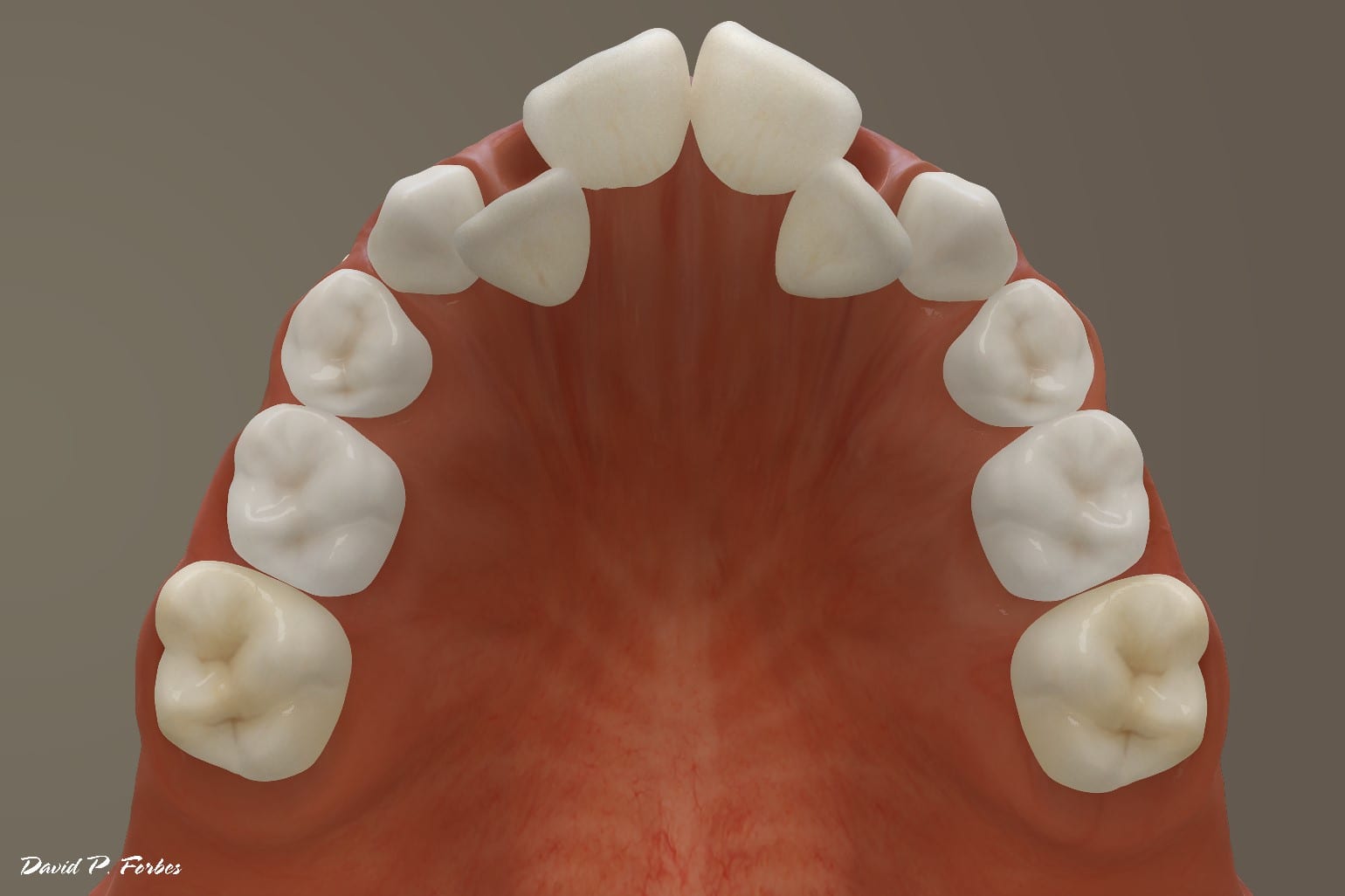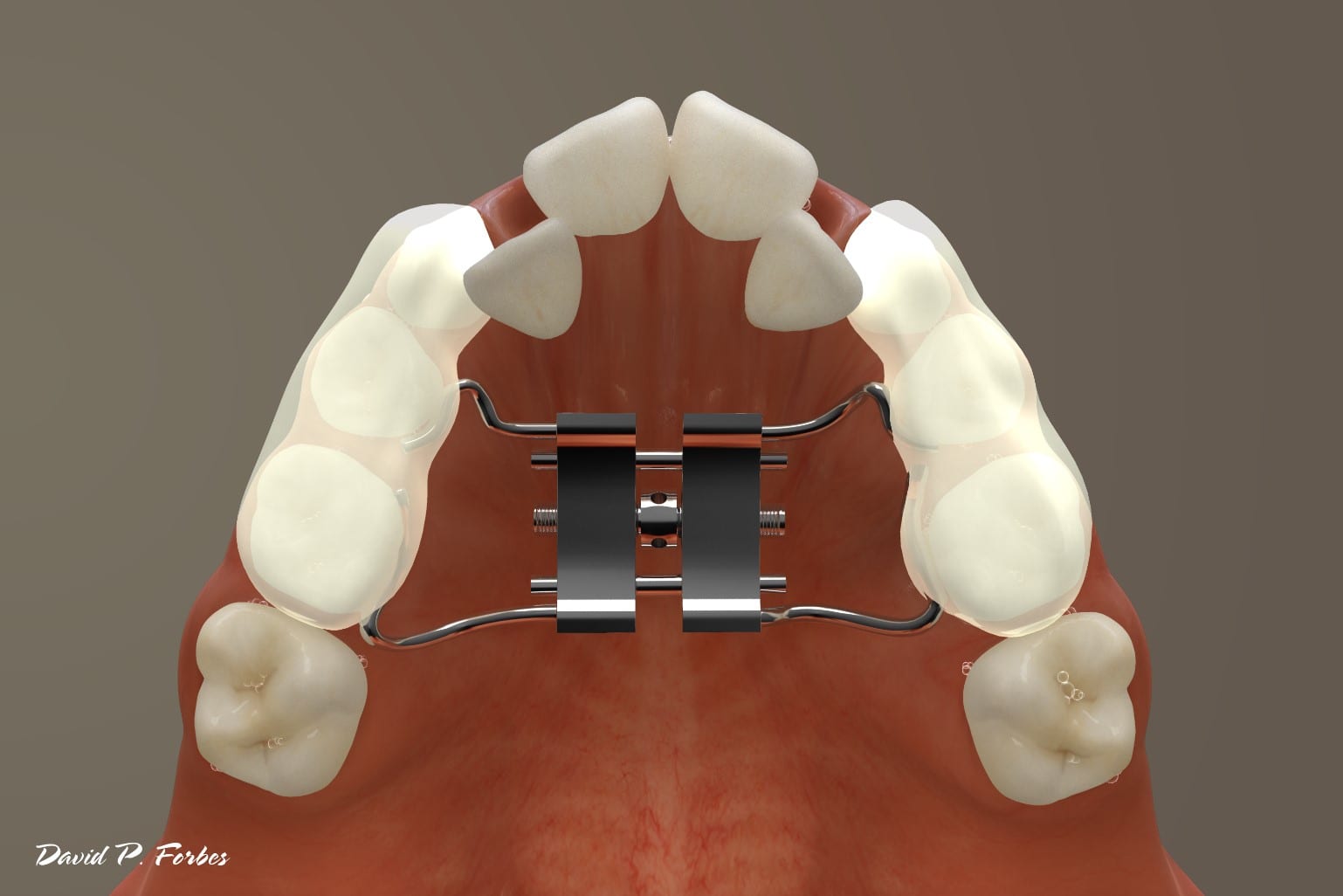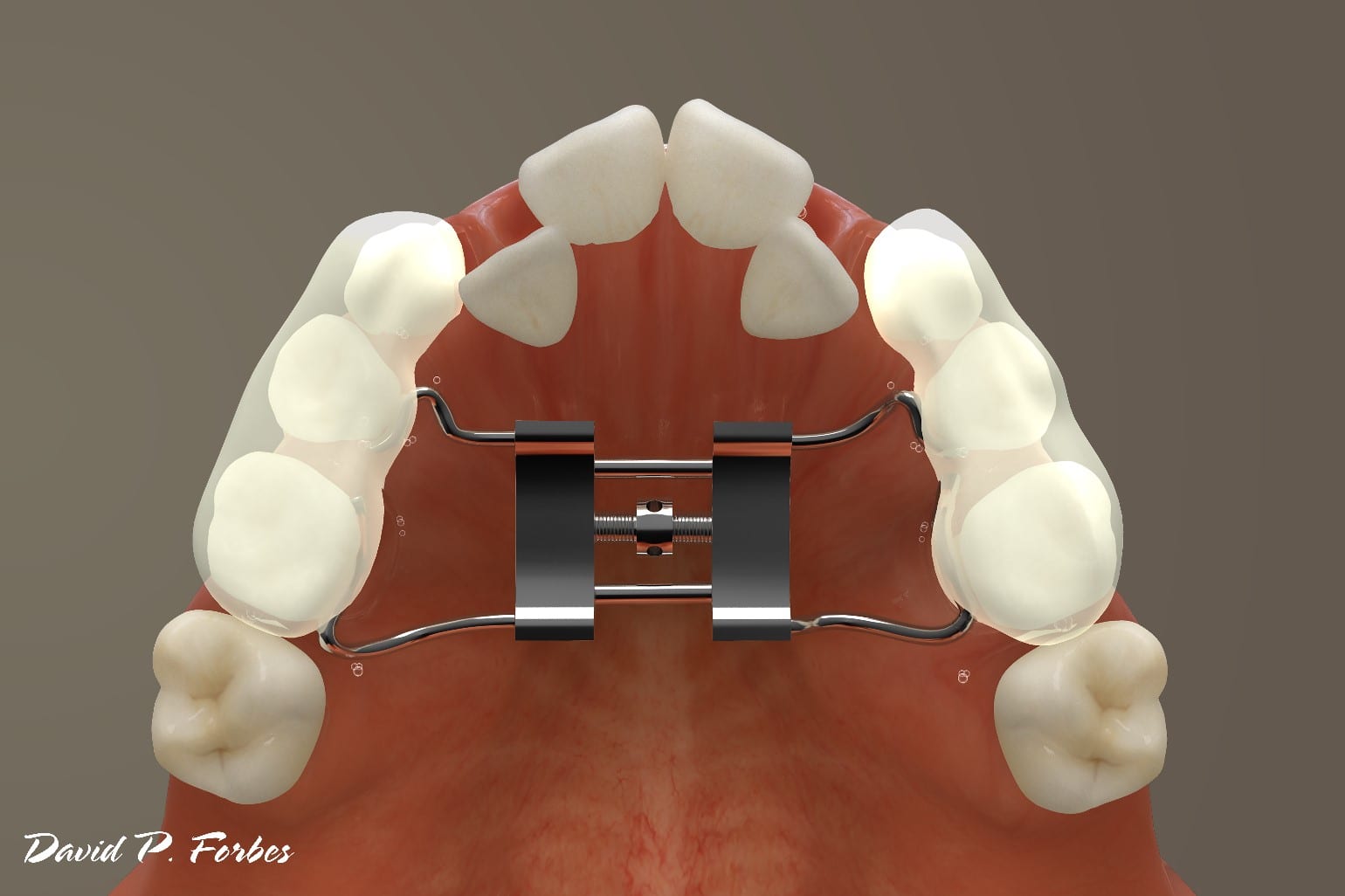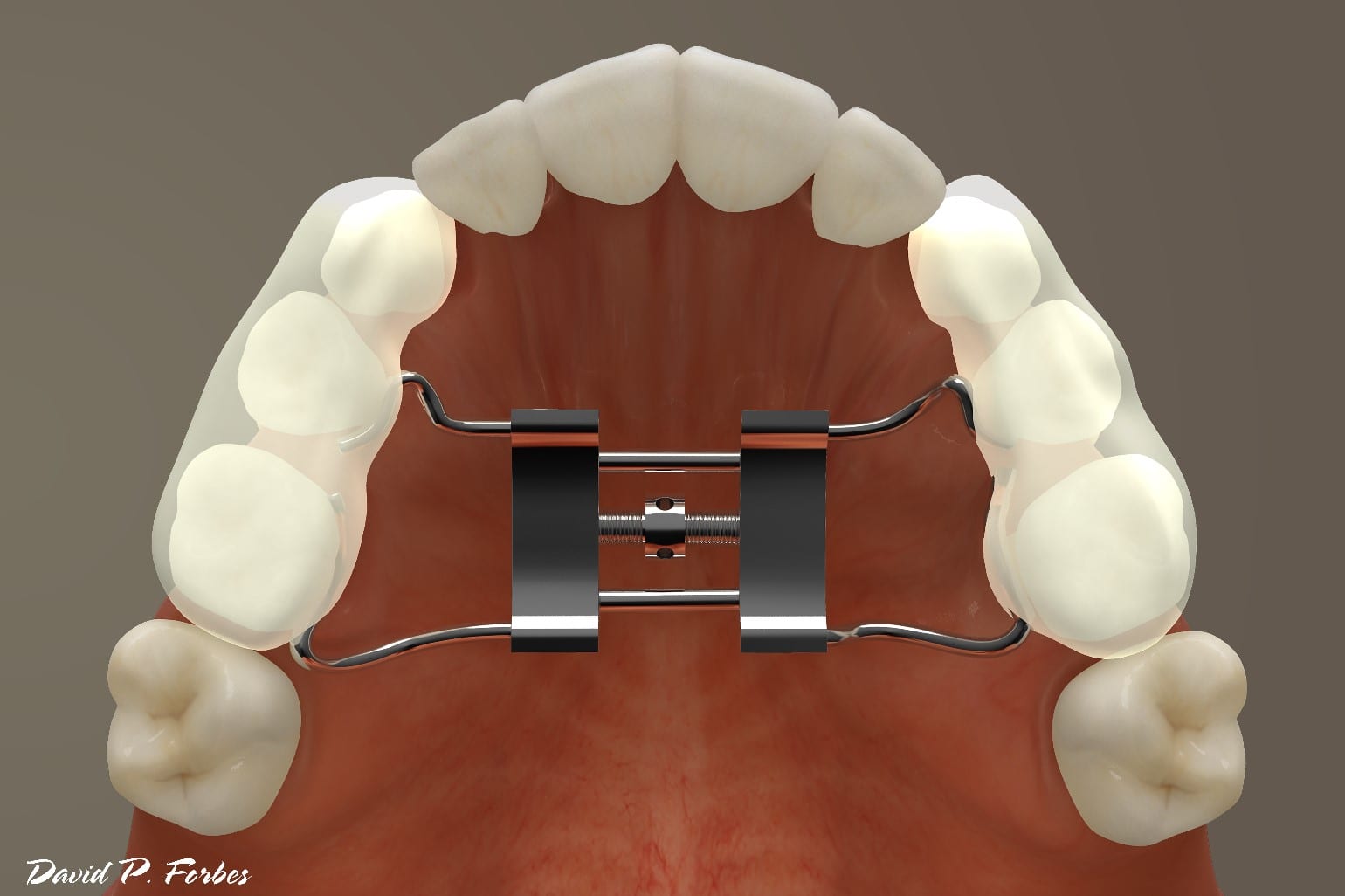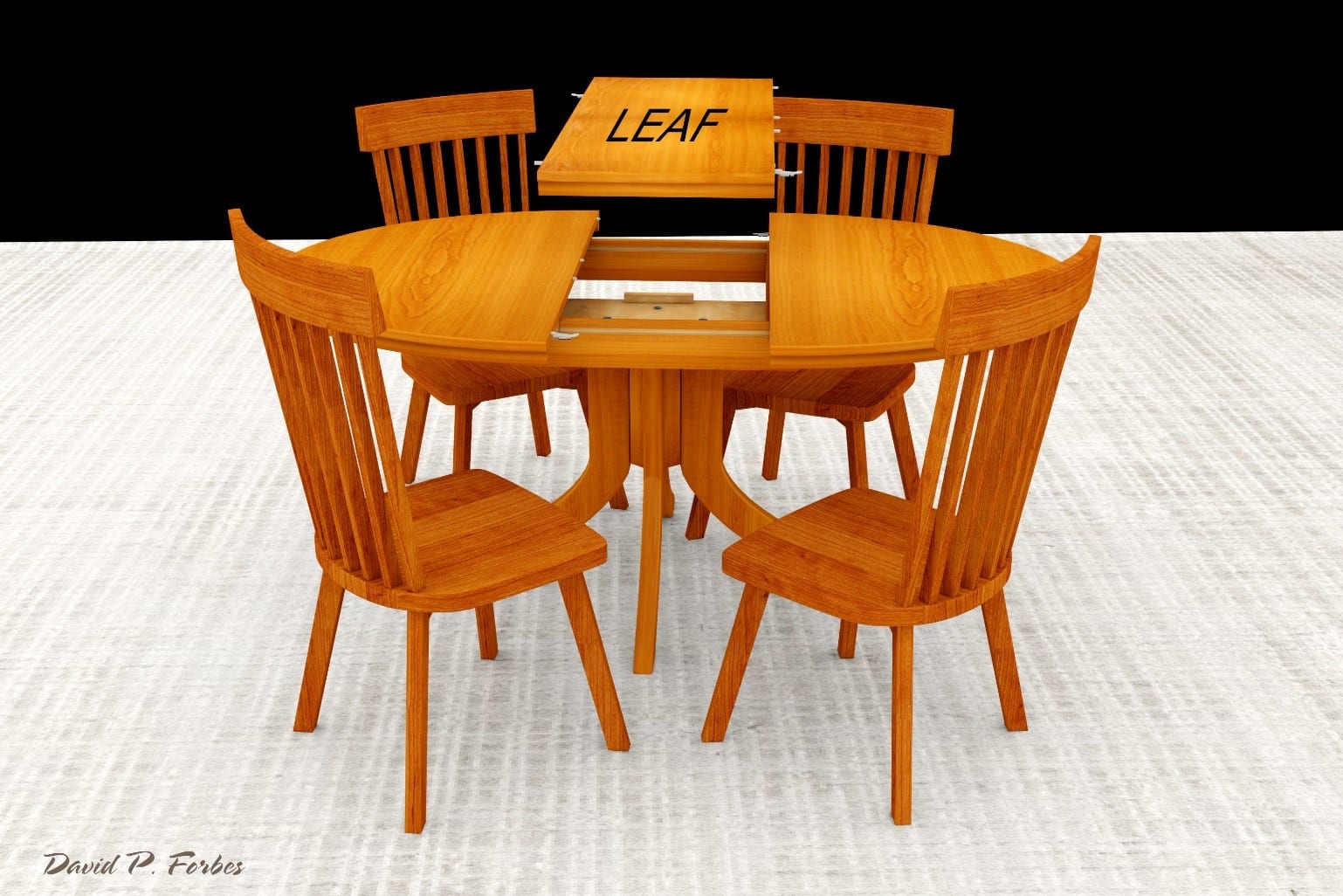How Expanders Work
Severe crowding of teeth, is the result of the lack of bony arch to accommodate the permanent teeth as they erupt. If teeth lack space, they either become impacted or erupt off the arch. When teeth erupt off the arch they position themselves in a region of the gum that doesn’t protect the bone. This misguided eruption position of the tooth, may negatively affect the long term health of the tooth.
One way to create space for a child’s teeth is to widen the upper jaw. An expansion appliance is typically used. This a simple procedure that performs exactly in the manner that nature does up to the age of 7 years. Before 7 years, your child’s brain growth is responsible for widening the upper jaw. The reason for this is the braincase sits above the upper jaw and as it widens, the upper jaw responds in kind. As the brain grows, the bones of the upper jaw gently separate and create new bone. The upper jaw consists of several bones and these bones are capable of separating and making new bone. The teeth fit along the upper jaw very much like chairs around a table.
How does the palatal expander work?
Imagine its Thanksgiving and family and guests are coming. Many families have a table that permits expansion. Imagine that the table is the upper jaw and chairs serve as teeth. In order to accommodate your guests, the table needs to be opened up, and widened, with a leaf inserted. In this manner, more chairs (teeth) can be positioned at the table (upper jaw). The leaf serves as new bone that forms as a result of the expansion appliance. Typically, the expander is placed in the mouth for 4-5 months. If there is sufficient room, then teeth normally erupt along the ridge of the bone.


